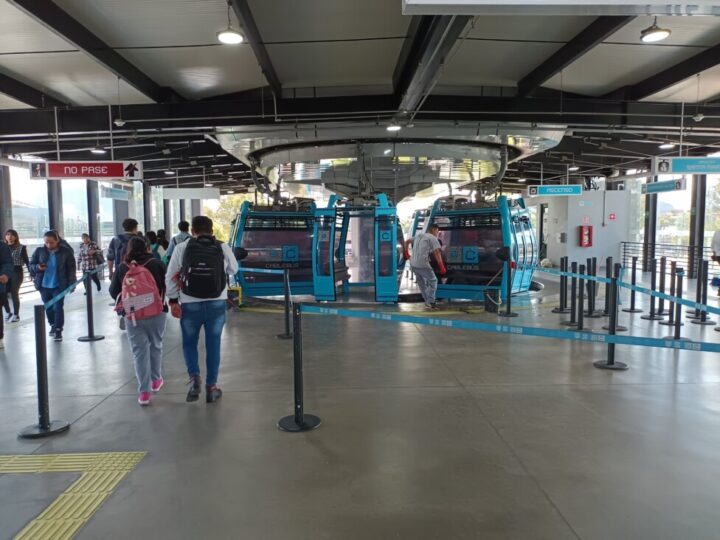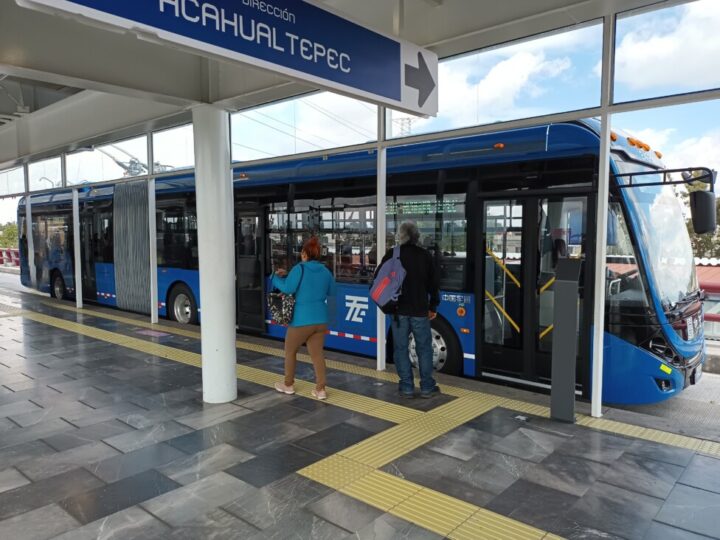Electric Transport Expands Slowly in Mexico — Global Issues
MEXICO CITY, Oct 12 (IPS) – Maribel Ochoa takes less time and spends less money commuting from her home to her work in eastern Mexico City thanks to the use of the electric Cablebus, a cable car that has improved her quality of life since the service began operating two years ago.
“It used to take me an hour. Now I make the trip in 15 minutes and the Cablebus drops me off three blocks from my house. And I don’t have to wait long for the cable car to come,” the 52-year-old married mother of seven, who is a cleaning lady for several families, told IPS.
In the past, she had to take a minibus to the Metro public transportation system to get to work.
The six-person turquoise-colored cable cars carry passengers dozens of meters at six meters per second through four hills on the east side of Mexico City. Below, passengers can watch the road traffic, the bustle of street vendors and children filing in and out of schools. Greater Mexico City is home to more than 20 million people.
The cable cars fly over the east side of the city, above the chaotic urban expansion below.
The route is part of one of the two lines of the Cablebus electric public transportation system, which is almost 11 kilometers long and connects the southeast with the eastern part of the city.
Since 2021, the cable car system, which cost some 300 million dollars to build, has transported around 36 million people on its two lines, at a rate of 120,000 passengers per day, in 682 cable cars for a distance over 20 kilometers. Line 1 connects the north and east of the capital.
In addition, since 2016, the Mexicable has been operating, with two 14-kilometer routes, in the municipality of Ecatepec, in the neighboring state of Mexico, north of the Mexican capital.
Together with a Metrobus line, a dedicated lane bus rapid transit (BRT) model and trolleybuses, these systems offer an alternative to the conventional fossil fuel-powered transportation networks that are predominant in this Latin American country of some 129 million people.
But these alternative public transportation systems are absent from the streets of medium and small cities due to financial, institutional and technological barriers, according to the report “Moving towards public electromobility in Mexico” released by the Economic Commission for Latin America and the Caribbean (ECLAC).
Mexico has a long tradition of using trolleybuses and cable cars, which were left in the past due to the prioritization of fossil-fueled ground transportation.
With 623 units, mostly trolleybuses, Mexico is the country with the third largest number of electromobility units, after Chile (2043) and Colombia (1589), according to the international E-BUS Radar platform. In total, the region has almost 5,000 electric buses, concentrated in the capital cities.
The replacement of fossil fuel vehicles with electric ones reduces gasoline consumption, air pollution and noise generation.
In Mexico, transportation accounted for 139.15 million tons of carbon dioxide (CO2) equivalent, a gas generated by human activities and responsible for global warming, out of a total of 690.62 million, according to 2021 data from the National Inventory of Greenhouse Gas and Compound Emissions of the governmental National Institute of Ecology and Climate Change (INECC).
The non-governmental Institute for Health Metrics and Evaluation in the United States estimated that air pollution in Mexico caused the death of around 38,000 people in 2019.

Few electric vehicles
Bernardo Baranda, director for Latin America of the non-governmental Institute for Transportation and Development Policy (ITDP) said there was “insufficient progress” in the decarbonization of the sector, which, moreover, is taking place mainly in large cities.
“As a country, we are lagging behind. We need to make some adjustments and to be more ambitious. More support is needed from the federal government; it would be very good if it strengthened the mass transit program, to provide incentives for concessionaires and operators to acquire more electric fleets,” he told IPS in Mexico City, where the Institute’s regional headquarters is located.
Since 2005, the government’s National Infrastructure Fund has financed 30 urban transport projects, at a cost of 5.45 billion dollars, but they have involved mainly conventional vehicles.
In Mexico there are more than 53 million vehicles, and the number has been rising steadily since 2000, according to figures from the National Institute of Geography and Statistics, which adds that most of them run on fossil fuels. The institution reported 229.36 million public transportation users in July in the country’s eight main metropolitan areas and cities.
Victor Alvarado, head of the Mobility and Climate Agenda area of the non-governmental organization The Power of the Consumer, identified challenges such as profitability, sufficient demand, adequate facilities, and awareness of the issue among concessionaires and transport operators.
“What we envision today arises from local needs and a commitment to offer public transport services that can mitigate the effects of climate change. The useful life of conventional buses ranges from 10 to 15 years, and this becomes an opportunity to renew the fleet,” he told IPS.
At the national level, experts point out, Mexico lacks an electromobility strategy, with a plan yet to be finalized, despite its importance in the reduction of polluting emissions and the path to move towards a low carbon economy, which is an additional restriction for the adoption of policies.
However, the government of the capital has set goals for the deployment of alternative transportation and pollution reduction.
Mexico City’s Mobility Sector Emission Reduction Plan calls for the addition of 500 trolleybuses by 2024.
In addition, one of the lines of action of the capital city’s Electromobility Strategy 2018-2030 projects that 30 percent of the Metrobus fleet will be electric by 2030, equivalent to 300 buses.
Little by little, more initiatives are joining the move towards electromobility. The government of the capital is building a third Cablebus line, five kilometers long and with 11 stations, on the west side of Mexico City.
And the northern industrial city of Monterrey, with more than 1.5 million inhabitants, is preparing to introduce some 110 electric buses with an investment of 56 million dollars in public funds.
It is doing so through the Tumi E-Bus Mission project, aimed at supporting 500 cities (including Mexico City and Guadalajara, as well as Monterrey) in their transition to the deployment of 100,000 electric buses in total by 2025.
With technical advice from the German Agency for International Cooperation and six international organizations, the plan is part of the Transformative Urban Mobility Initiative.
Likewise, the city of Mérida, capital of the southeastern state of Yucatán, is building the Ie-tram, a 116-kilometer all-electric BRT line on the outskirts of the city, for an investment of some 166 million dollars.

ECLAC outlines three scenarios for Mexico, to 2025 and 2030. The intensive adoption perspective requires an addition of 18.99 million electric units, so that the proportion would rise to 21 percent and 42 percent of the total, respectively.
Ochoa hopes that alternative transportation will expand, so that her commute will become even shorter and cheaper.
But she knows that this depends on the decisions made by the national and local authorities.
Baranda, the regional expert, is confident that the next government will prioritize electric transport. “The sector is one of the main producers of pollutants. This has to be reflected in budgets. In small cities we should move towards the transition; smaller units can be used, these areas should not be left behind,” he said.
Alvarado the activist said actions are needed in financing, reallocation of budgets, professionalization of local authorities and creation of incentives for the acquisition of more environmentally friendly fleets.
“But part of the problem is that the energy source is still fossil fuels. That is where a focus on renewable energy generation comes in. In the states we have to see who dares to explore renewable energy for transportation; that is a great opportunity,” he said.
But until that future arrives, the urban population has to put up with mostly inefficient, unreliable and polluting public transport.
© Inter Press Service (2023) — All Rights ReservedOriginal source: Inter Press Service
Check out our Latest News and Follow us at Facebook
Original Source






